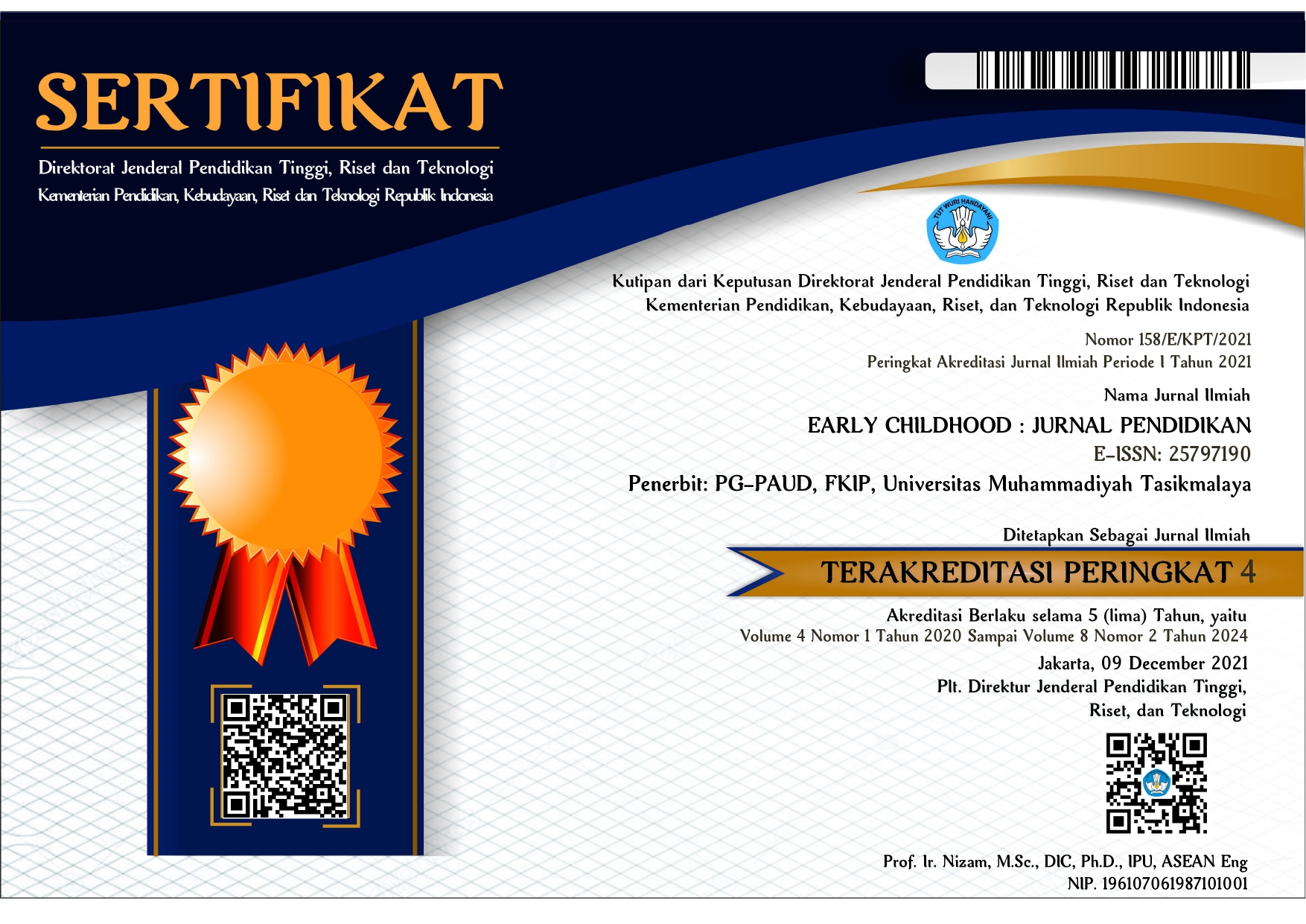DISPOSISI MATEMATIS ANAK USIA DINI (STUDI KASUS DI KELOMPOK A PAUD PERMATA HATI AISYIYAH TASIKMALAYA)
DOI:
https://doi.org/10.35568/earlychildhood.v2i2b.282Keywords:
disposisi matematis, matematika anak, PAUDAbstract
ABSTRAK
Artikel ini merupakan hasil penelitian yang bertujuan untuk mendeskripsikan 1) pembelajaran matematika yang dapat mengembangkan disposisi matematis anak di kelompok A PAUD Permata Hati Aisyiyah, dan 2) mendeskripsikan kecenderungan disposisi matematis anak usia 3-5 tahun di kelompok A PAUD Permata Hati Aisyiyah. Jenis penelitian yang digunakan adalah penelitian kualitatif dengan metode studi kasus. Subjek penelitian yaitu siswa kelompok A PAUD Permata Hati Aisyiyah Kota Tasikmalaya. Hasil penelitian menunjukkan 1) disposisi matematis anak memiliki potensi kemunculan lebih banyak pada aktifitas pembelajaran yang menggunakan media nyata dan berbasis aktifitas untuk anak, dan 2) anak usia 3-4 tahun menununjukkan kecenderungan disposisi matematis berkembang pada aspek percaya diri terhadap kemampuan matematika dan rasa ingin tahu terhadap matematika. Sedangkan pada usia 4-5 tahun, cenderung menunjukkan kemunculan disposisi matematis yang dominan pada kepercayaan diri, rasa ingin tahu, daya cipta, serta sedikit frekuensi kemunculan pada ketekunan, fleksibilitas dan apresiasi matematis.
Kata Kunci: disposisi matematis, matematika anak, PAUD.
ABSTRACT
This article is the result of research that aims to describe 1) mathematics learning that can develop mathematical dispositions of children in group A PAUD Permata Hati Aisyiyah, and 2) describe the tendency of mathematical dispositions of children aged 3-5 years in group A PAUD Permata Hati Aisyiyah. Qualitative research with a case study method used in this research. The research subjects were group A students of Permata Hati Aisyiyah PAUD, Tasikmalaya City. The results showed that 1) the mathematical disposition of children has more potential for emergence in learning activities that use real object and activity-based for children, and 2) 3-4 year olds show a tendency for mathematical dispositions to develop on aspects of self-confidence in mathematical abilities and curiousity about mathematics. Whereas at the age of 4-5 years, it tends to show the emergence of dominant mathematical dispositions on self-confidence, curiosity, inventiveness, and a slight frequency in perseverance, flexibility and mathematical appreciation.
Keywords: mathematical disposition, childr mathematics, PAUD.
Downloads

Downloads
Published
Issue
Section
License
Copyright Notice
Early Childhood Journal is an Open Access Journal. The authors who publish the manuscript in this journal agree to the following terms:
This work is licensed under a Creative Commons Attribution-NonCommercial-ShareAlike 4.0 International License.
Privacy Statement

The names and email addresses entered in this journal site will be used exclusively for the stated purposes of this journal and will not be made available for any other purpose or to any other party. Early Childhood allows the author(s) to hold the copyright and to retain publishing rights without restrictions.




